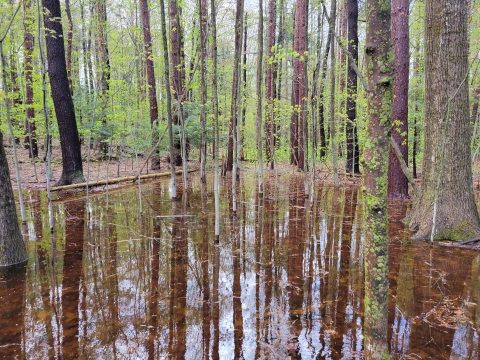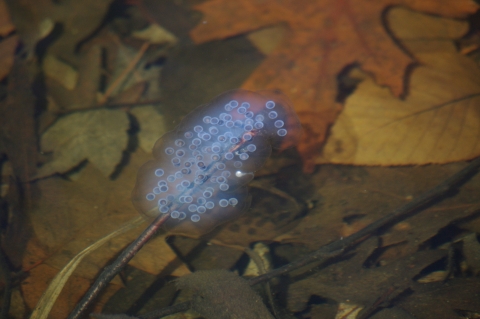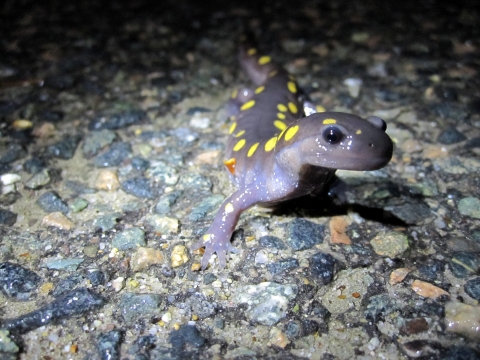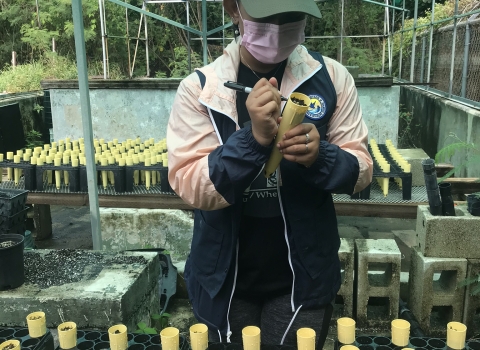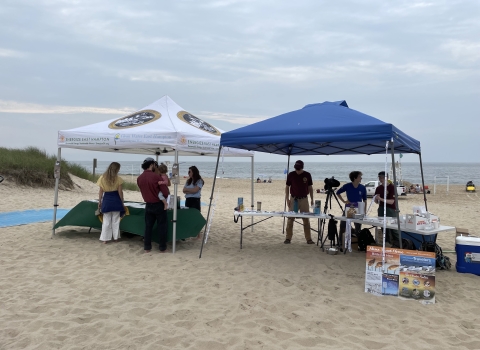One of the features people look for when buying a home is a safe neighborhood — the proverbial “great place to raise kids.” Wildlife parents are no different; they search for a spot that has everything their offspring need … and as few predators as possible. For certain species, vernal pools are dream properties, even though they offer only seasonal occupancy.
Desirable digs
Vernal pools are small woodland wetlands that form from snow melt and rainfall in late winter or early spring, and sometimes again in fall. Also called ephemeral pools, they dry out at some point in the year, so fish can't live in them. This is their chief amenity for animals whose eggs and larvae are on the menu of many fish species.
Three types of animals in particular — wood frog, mole salamander (such as spotted, marbled, blue spotted and Jefferson salamander) and fairy shrimp — rely on vernal pools to reproduce. In fact, vernal pools are defined by these species; if any of one of these is found in a wetland, it’s a vernal pool.
Perilous pilgrimage
Wood frogs spend the winter tucked under fallen leaves on the forest floor. Though it sounds cozy, it’s still bitter cold, and the frogs even partially freeze. Mole salamanders seek safety from the cold in deep burrows below the frost line, entering a state similar to hibernation.
Each spring, on the first night above 45 degrees Fahrenheit after a heavy rain, wood frogs and mole salamanders make their way en masse to the vernal pools where they got their starts, traveling up to a half-mile. This is the “Big Night.” They crowd roadways, and many succumb to car tires. Upset by the annual carnage on roadways popular with amphibians on the move, some communities have built tunnels, while others deploy crossing brigades, to help them pass safely.
Full-service nursery
Once at the vernal pools, the amphibians “congress,” or court each other. The loud “quacking” of male wood frogs fills the air. Following mating, the females lay masses of jelly-coated eggs, often attached to sticks at the bottom of the pool. Then the adults leave, their parenting complete. If all goes well, the eggs will hatch, and the young frogs and salamanders will mature on their own, eating algae, insects, and invertebrates before the pool dries up.
The fairy shrimp is one such invertebrate. Adults lay eggs with tough coatings, called cysts, that lodge in the mud at the bottom of the pool. The cysts can survive the dry conditions of late summer and fall. They can even withstand freezing winter temperatures. When the pool fills again in spring, the next generation of fairy shrimp emerges into the water, just in time to feed hungry salamander larvae.
Choice listing
A seasonal home at the water’s edge may seem ideal to many people, but for most amphibians, in the water is the place to be come spring. Vernal pools offer safe retreats, with childcare provided — something human parents would no doubt find attractive.


